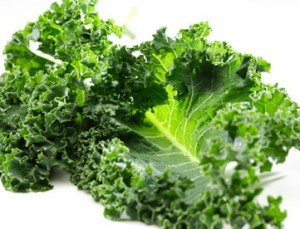Kale is now famous! It recently made it into the weekend newspaper with an article about the benefits of Kale in the prevention of glaucoma. In a Harvard Medical School research paper published in JAMA Ophthalmology, showed that an intake of leafy green vegetables can reduce the risk of glaucoma by 20 – 30%. Although that is not the only benefit of eating leafy greens, it is great to see it featured in a mainstream medical journal.
An easy way to incorporate Kale into your diet is through drinking regular Green Smoothies – check out this past blog post for details on how to make them! And one of my favourite ways of eating kale is to make Kale Chips. They are easier than you think and in this article The Kitchen Klutz’s Kale Chips I share with you a foolproof recipe for making these yummy snacks.
Here is a little more information about this amazing superfood Kale:
Kale is a green leafy plant belonging to the Brassica family, which also includes cabbage, broccoli, cauliflower, brussel sprouts and collard greens. This is a family of vegetables that should be rotated through the diet and not eaten every day – the brassica family contain natural plant chemicals called Isothyocianates which can inhibit thyroid function. If they are eaten daily in large amounts then supplemental iodine needs to be added to the diet to counteract this effect.
In Australia most often we find the curly leaf kale available. (below). It is a very hardy plant growing in most type of soils in a cooler climate and is naturally pest resistant, probably due to it being grown in it’s wild state and not hybridised to any great extent.
Kale is one of the most nutritious of the green leafy vegetables and is one that should be a staple part of the diet, being rotated with other greens to make the base of green smoothies, or in salads. It is high in Vitamin K which is essential for healthy blood clotting (people taking blood thinning medication need to be aware of this fact), and for building strong bones. As well as the Vitamin K content, Kale is also high in calcium making this the number one green of choice for the prevention of osteoporosis.
Kale also contains high levels of lutein and zeaxanthin which are excellent nutrients for the eyes – for the prevention of cataracts and age related macular degeneration. With powerful antioxidant and anti-inflammatory properties it really is “food as medicine!”
The Brassica family of vegetables also contain anti-cancer nutrients as well. When the cell walls of the green leaves are broken down (as in blending or chewing well) an enzyme is released which reacts with the plant alkaloids to create a chemical called Indole-3-Carbinol which can significantly inhibit the formation of many cancers and helps to convert carcinogenic oestrogen into its more protective form.
Because of the natural alkaloids that green leafy plants contain, rotating between them is essential and only eating one type of green leafy once a week is advised. The natural alkaloids are designed to repel animals from eating the whole crop of the plant and killing it off completely, so loading up on only one type of green over a period of time could lead to minor symptoms such as nausea or a repulsion for that green.
It is easy to grow and being so nutritious it is one green that you would do well to become familiar with!
Leisa
![]()
from Embracing Health | Holistic Healing & Lifestyle Blog http://www.embracinghealthblog.com/2016/02/02/another-win-for-kale/
via IFTTT


No comments:
Post a Comment